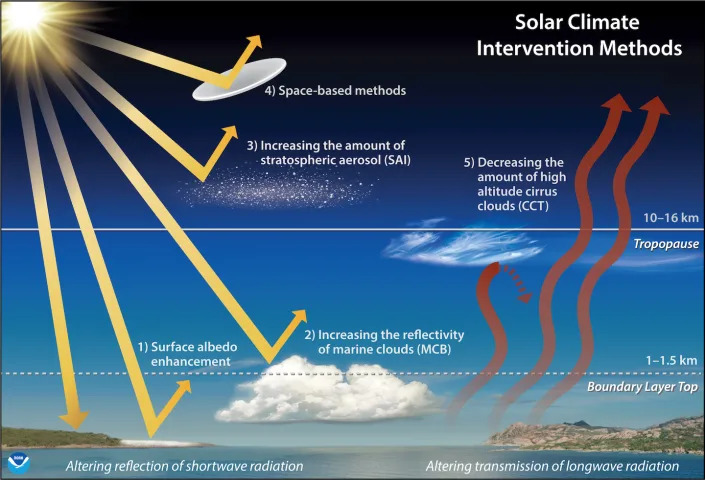Green Jet Fuel Is Causing Problems For Biden's Inflation Reduction Act
- The Inflation Reduction Act budget reconciliation bill has passed the Senate and will now move for approval in the House.
- As well as extending the existing biodiesel and renewable diesel tax credit, the bill provides a higher tax credit for the production of SAF.
- NATSO and SIGMA have warned that this differential in the bill will make biodiesel and renewable diesel more expensive, increasing the price of goods hauled by trucks.
As the Senate passed the Inflation Reduction Act budget reconciliation bill, U.S. fuel retailers warned that including higher tax credits for sustainable aviation fuel (SAF) would reduce the supply of biodiesel and renewable diesel as all those fuels compete for feedstock.
The bill, which is now set to move for approval in the House, is part of the Biden Administration's efforts to lay the foundations for reducing America's greenhouse gas emissions, including emissions from the aviation sector.
The bill extends the existing biodiesel and renewable diesel tax credit, but it also provides a higher tax credit for the production of SAF.
This higher tax credit for the greener aviation fuel would reduce the availability of renewable diesel and biodiesel, associations of U.S. fuel retailers say. The lower availability of renewable diesel would further increase the cost of everyday household goods which are transported by trucks, NATSO, a national trade association representing travel plaza and truck stop owners and operators, warned after the bill was unveiled.
"American consumers will pay more for all goods hauled by truck"
NATSO, together with SIGMA, a trade association representing fuel marketers and convenience store chain retailers in the United States and Canada, strongly urged lawmakers to oppose the Inflation Reduction Act unless it provides tax parity between the biodiesel tax credit (BTC) and the proposed SAF tax credit.
"This legislation purports to create a 'technology neutral' clean fuels tax scheme, which fuel retailers have long supported. Favorable treatment for SAF flies in the face of this approach," said David Fialkov, NATSO Executive Vice President of Government Affairs.
"SAF is less beneficial for the environment than renewable diesel and is going to cost taxpayers more. Providing more favorable tax treatment for a technology that has fewer environmental benefits undermines the intellectual integrity of the climate provisions in this bill," Fialkov added.
"The trucking industry delivers more than 80 percent of America's goods and relies on biofuels, like renewable diesel and biodiesel, to keep emissions low. If Congress passes a higher tax incentive for SAF, America's supply of biofuels will become limited and more expensive. American consumers will pay more for all goods hauled by truck," NATSO and SIGMA said at the end of July.
SAF Incentives Needed For Lower-Carbon Aviation
While fuel retailers call for equal treatment of renewable diesel and SAF in the new tax credit provisions, the National Business Aviation Association (NBAA) welcomed the Senate approval of an SAF tax credit that would increase the production and availability of the fuel. SAF is expected to help the industry achieve net-zero CO2 emissions by 2050, NBAA says.
"Production tax credits in the bill would greatly reduce the cost of commercially available SAF — made from sustainable feedstocks like used cooking oil, crop residues and municipal solid waste — making air travel more sustainable for Americans without increasing costs to consumers," RMI, a nonprofit organization promoting the clean energy transition, said in comments before the Senate passed the bill.
According to BP, which has an SAF business, Air bp, "SAF gives an impressive reduction of up to 80% in carbon emissions over the lifecycle of the fuel compared to traditional jet fuel it replaces, depending on the sustainable feedstock used, production method and the supply chain to the airport."
The International Air Transport Association (IATA) has recently called for governments to urgently put in place large-scale incentives to rapidly expand the use of SAF as aviation pursues its commitment to achieving net-zero carbon emissions by 2050.
"Investments are in place to expand SAF annual production from the current 125 million liters to 5 billion by 2025. With effective government incentives, production could reach 30 billion liters by 2030, which would be a tipping point for SAF production and utilization," IATA said in June.
Feedstock Displacement
But fuel marketers and some environmental campaigners say that higher incentives for SAF production compared to the tax credits for biodiesel would displace renewable diesel production and could also lead to a loss of land and biodiversity because of the expected higher demand for lipid-based feedstocks.
"This additional incentive for SAF will undercut and eventually eliminate America's biodiesel and renewable diesel market as disproportionate pressure is placed on feedstock," NATSO and SIGMA say.
The International Council on Clean Transportation (ICCT), for example, in its call for a cap on lipid-based feedstocks in California's biomass-based diesel (BBD) fuels, said a cap would avoid global displacement of vegetable oils that would contribute to negative impacts on global food and feed markets, deforestation, cropland expansion, rising greenhouse gas emissions, and biodiversity loss.
"Increasing the global supply of vegetable oils, directly or indirectly, necessarily comes at the cost of forests and other natural lands," ICCT said in a report earlier this month, noting that a displacement of vegetable oils would contribute to food price spikes and deforestation.
By Tsvetana Paraskova for Oilprice.com










